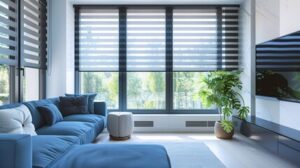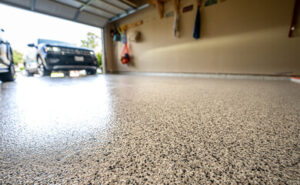Ceiling Insulation Perth improves the comfort of a home or building while reducing energy consumption and environmental impacts. It reduces the need for heating and cooling, leading to substantial electricity bill savings.
Choose from insulation in batts for easy installation or rolls to cover ceiling joists to help prevent heat flow. Select a product with a high R-value for greater resistance to heat transfer.

Ceiling insulation is a simple and effective way to reduce your energy bills. It keeps your house warmer in winter and cooler in summer by providing a thermal barrier that prevents the transfer of heat energy, which cuts down your energy costs.
Without proper ceiling insulation, heat easily escapes your home through the roof space and into the air outside. This makes your heating and cooling systems work harder to maintain comfortable temperatures. The good news is that this can be avoided by installing the correct insulation.
Insulation is available in a range of materials, such as cellulose fibers, foil, and rigid boards. Each has a specific R-value, which is an indicator of its thermal resistance. The higher the R value, the greater the insulation’s insulating properties. A professional installer can assist you with deciding the right level of insulation for your home.
The optimum R value for your ceiling will depend on the climate where you live, as well as the size and type of your home. A well-insulated attic will not only help to cut your electricity and gas bills, but it will also help to protect your heating and cooling system from damage caused by extreme temperatures.
In addition to reducing your energy consumption, ceiling insulation has also been shown to significantly improve the air quality in your home. This is because it blocks external pollutants, such as dirt, toxins and smoke, from entering the home through air gaps.
In fact, according to Remodeler Magazine’s Cost vs Value report, adding insulation is one of the best energy-efficient renovation projects you can do for your home. This is largely due to the fact that it is cheap, easy to install, and has an outstanding return on investment. The average homeowner can recoup up to 117% of the initial cost by implementing fiberglass attic insulation in their home. With these impressive results, it’s no wonder that more and more people are choosing to insulate their homes with the latest insulation technologies.
Increased Comfort
Ceiling insulation is an effective way to keep indoor temperatures stable and comfortable. It prevents heat loss during winter and keeps the sun from penetrating through the roof during summer, which helps to lower energy consumption. Additionally, insulation materials have sound-absorbing qualities to create a tranquil environment inside.
Its energy-saving properties reduce the need to use artificial heating and cooling systems, which in turn leads to a significant reduction in your energy bills. The energy savings will quickly cover the cost of installing insulation and more money can be allocated to other home improvements, like replacing old appliances or upgrading the lighting.
While monetary savings are an important benefit of ceiling insulation, improved indoor comfort is a major incentive for many people. Having a consistently regulated temperature in your house is essential for your health and wellbeing. It can be difficult to sleep or focus when you’re shivering after a long day or sweating while cooking in the kitchen, which is why having an adequate amount of ceiling insulation is so important.
The optimum level of ceiling insulation for your home will depend on your budget and the R-Value you are looking for. Generally speaking, higher R-Value products offer greater resistance to heat transfer and therefore provide more energy efficiency. You should also consider the installation method you prefer, as there are a number of different options available. Some methods are more labour intensive than others, and you should be aware of the potential health and safety risks associated with improper installation.
When insulating between floors, there are three main methods you can choose from: removing existing drywall, cutting into the studs, or cutting into the subfloor from above. Each option has its pros and cons, so it is best to consult an expert to determine which will be the most suitable for your situation.
The electricity savings potential for middle income households from insulation in the Pretoria climatic region has been well established, but further research and marketing is needed to promote the benefits of insulation nationwide. The most important thing is to ensure that your insulation is installed correctly and not damaged during the process.
Reduced Pollution
Insulation is a natural solution to reduce pollution by creating a barrier that restricts air flow. It keeps cold air from escaping in winter and hot air out in summer, decreasing energy usage. Consequently, this helps to decrease the demand for heating and cooling and ultimately leads to reduced carbon emissions. Similarly, insulation can also help to maintain a stable indoor temperature, eliminating the need to open windows and doors as frequently which allows outdoor pollutants to enter the living space. In addition, some insulation materials have sound-absorbing properties to create a quieter atmosphere.
The regulated indoor temperature provided by ceiling insulation also contributes to healthy interior air quality (IAQ). It prevents external pollutants, such as dust and pollen, from entering the home, which can lead to asthma and other respiratory conditions. In addition, insulation helps to keep moisture away from walls and ceilings, which can lead to mold and mildew. Some insulation products are designed with a vapor barrier to control humidity and prevent condensation.
All insulating materials require some amount of energy to produce, including raw material extraction and production processes, as well as transportation and installation. However, there are a variety of products available that have low environmental impacts, including recycled materials and bio-based options.
Adding ceiling insulation during construction significantly reduces the environmental impact of a building. It is one of the most effective ways to increase energy efficiency and decrease direct consumption of energy. It is also a cost-effective way to improve the comfort of occupants and promote a sustainable lifestyle for homeowners.
In addition to reducing electricity bills, insulation also reduces the need for fossil fuels, which cause air pollution and climate change. It is estimated that insulating your home and commercial buildings could help to reduce greenhouse gas emissions by up to 70%, thus contributing to the global effort to limit temperature rises to below 1.5° Celsius. To make sure you are using the most environmentally friendly insulation products, choose a supplier that specializes in eco-friendly solutions and can offer products with low toxin levels.
Increased Value
There are many ways to increase the value of your home, including adding a new kitchen or repainting the interior. However, if you really want to boost your home’s value, there’s one simple but effective solution: ceiling insulation. This affordable upgrade not only reduces energy usage and lowers your heating and cooling bills, it also improves indoor comfort while protecting your property from harsh weather conditions.
If you’re considering selling your home in the future, proper ceiling insulation is a smart investment. Buyers are increasingly looking for homes that are more energy-efficient and cost-effective to operate, and a well-insulated home will likely be appealing to potential buyers. In fact, a well-insulated home can save a family between $250 and $700 in heating and cooling costs per year.
When deciding on the type of insulation to install, it’s important to consider R-value and installation preferences. R-value measures the resistance to heat flow, and the higher the R-value, the better the insulation performance. You’ll also need to decide whether you prefer batts for easy installation or loose-fill or roll insulation for confined spaces.
The type of insulation you choose should also match your budget and climate. If you live in a colder area, you’ll want to opt for thicker R-value insulation to keep your home warm and comfortable. If you’re building a new home, consider using the highest R-value available in your area to get the best value for your money.
You’ll want to choose a high-quality product that has been tested and approved for safety and efficiency. This will ensure that your home is safe for both you and any visitors and that it complies with local building codes. In addition, choosing a quality product will make it easier to sell your home in the future.
While the exact impact of your insulated ceiling on resale will vary depending on your situation and local market, you can expect to see an increase in your home’s value. As more and more buyers focus on energy efficiency, ceiling insulation is a great way to save energy, reduce pollution, and add value to your home.


